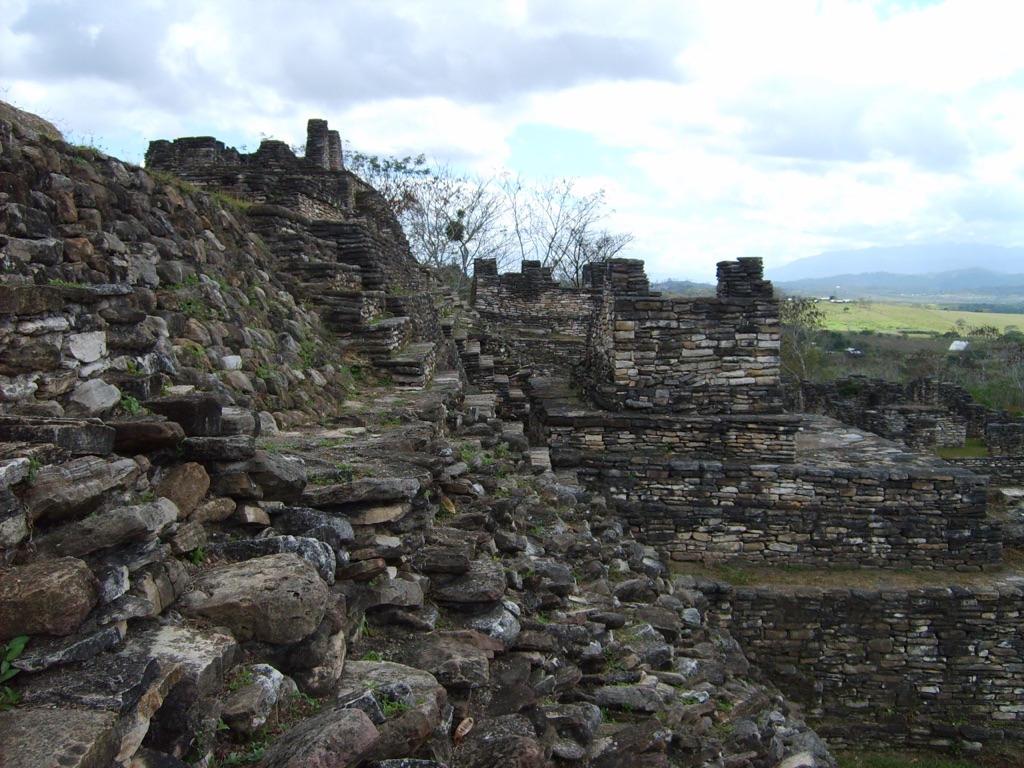Summary
The Glorious Past of Toniná
Nestled in the lush Chiapas highlands, the Toniná Archaeological Site stands majestically. This ancient Maya city tells a story of power and astronomical wisdom. Unlike other Maya ruins, Toniná boasts a unique vertical design. It consists of towering pyramid structures and intricate carvings. These reveal the city’s unmatched military prowess and cultural vitality. Scholars believe Toniná’s peak era spanned the 6th to the 9th centuries. Here, rulers conducted significant ceremonies and established their dominance. Exploring the site’s ball courts and temple-pyramids, visitors can feel the vibrancy of ancient Mesoamerican life.
Get your dose of History via Email

Architectural Marvels of Toniná
What sets Toniná apart is its impressive architecture. The site’s seven-tiered pyramid stretches skywards, challenging the heavens. Carved stone monuments, or stelae, depict the city’s rulers and gods. These are scattered throughout the complex. Toniná’s acropolis features carved reliefs that recount historical battles and sacred rituals. It’s a testament to the city’s status as a spiritual and political hub. The labyrinthine network of tunnels and staircases within the complex adds a layer of mystery that continues to captivate archaeologists and visitors alike.
Rediscovering Toniná’s Legacy
Today, Toniná is a UNESCO World Heritage candidate awaiting official recognition. The site’s ongoing excavation unearths fascinating artifacts and helps unravel Maya civilization’s secrets. Travelers who visit Toniná embark on a journey through time. They explore the depths of the city’s lore. Modern conservation efforts aim to preserve this magnificent site for future generations. They further enable a deeper understanding of the intricate history of the Americas. Each discovery at Toniná, from tomb finds to hieroglyphic texts, celebrates the continuity of Mesoamerican heritage.

Historical Background of Toniná Archaeological Site
The Rise of a Maya Powerhouse
Toniná, an ancient city steeped in mystery, flourished in the heart of Chiapas, Mexico. The Maya built it between the 6th and 9th centuries. This site became known for its military strength and unique architecture. Toniná rivaled other Maya city-states like Palenque. It’s now seen as a significant center of power in Maya history. The site reveals insights into the political and spiritual lives of its inhabitants. Grand temples and pyramids reflect the city’s former grandeur and influence.
Architectural Splendor and Astronomical Precision
The architecture of Toniná is nothing short of remarkable. Seven stepped terraces lead up to monumental buildings. It’s clear the Maya had a deep understanding of astronomy and sacred geometry. Their engineering skills enabled them to erect one of the tallest Maya pyramids. This site also features intricate carvings and stelae that tell stories of gods, rulers, and cosmic events. The layout of Toniná suggests it was designed with star alignments in mind.
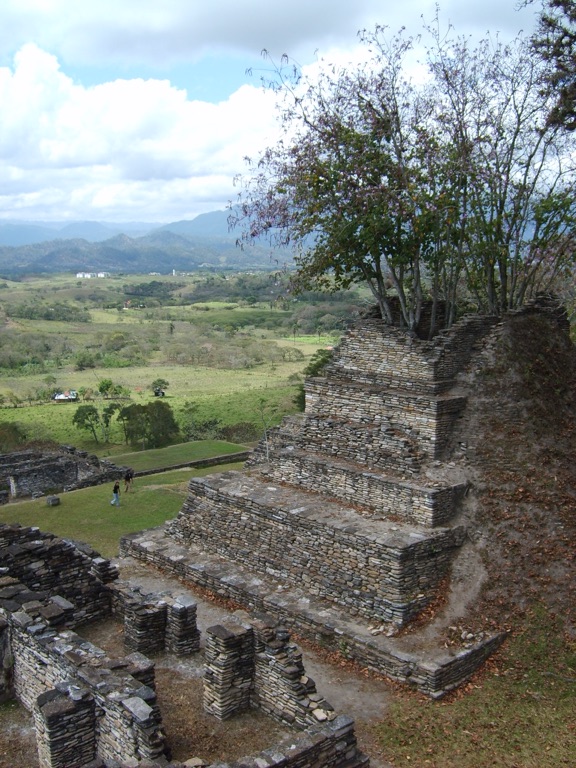
Clues to Ancient Beliefs and Practices
Carved reliefs and stone monuments throughout Toniná provide a window into the past. They depict rituals, battles, and the divine right of kings. The artwork features an extensive gallery of Maya deities and offers clues about religious practices. The acropolis at Toniná includes a maze of corridors and stairways. This likely played a role in sacred ceremonies. The rich iconography throughout the site reflects a complex belief system intertwined with daily life.
Interpreting Historical Narratives
Researchers are piecing together Toniná’s history from numerous hieroglyphs found on site. These ancient writings record significant historical events. The city’s ancient inhabitants documented wars, political upheaval, and alliances. Through these texts, Toniná’s dynamic history comes into sharper focus. Archaeologists and linguists continue to interpret these stories. As a result, we’re gaining a clearer understanding of the Maya civilization’s intricate tapestry.

Significance for Future Generations
Preservation efforts at Toniná aim to protect this invaluable archaeological treasure. Current excavations provide ongoing revelations about the site’s past. The findings at Toniná hold universal value. They stand as a testament to the ingenuity and resilience of the Maya people. Efforts to maintain and study the site ensure that future generations can learn from and appreciate this ancient wonder. In this way, the legacy of Toniná and the stories it holds will endure.
The Discovery of Toniná Archaeological Site
Uncovering the Hidden City
The Toniná Archaeological Site revealed its secrets to the modern world relatively late. Surrounded by the dense forest of Chiapas, Mexico, it lay dormant and concealed for centuries. It wasn’t until local farmers stumbled upon its stone structures that it caught the attention of archaeologists. Soon after, the true scale of this Maya city began to emerge. It was a momentous find, showcasing the vast expanse of the Maya civilization’s reach.
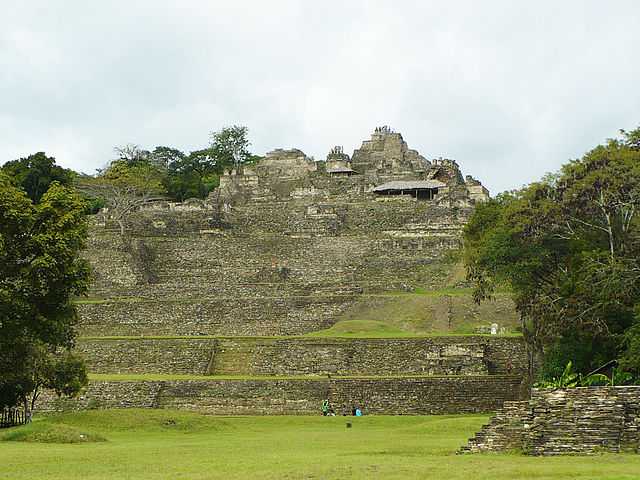
Initial Excavations and Challenges
Early excavations at Toniná were fraught with challenges. The thick jungle was relentless, and the elements unforgiving. Yet, archaeologists persisted, driven by the prospect of unveiling a new chapter in Maya history. As they delved deeper, the site presented an extraordinary array of artifacts and architecture. This hinted at the grandeur and complexity of life in the ancient city. Toniná’s architecture, art, and inscriptions slowly started to see the light of day.
Chronicling the Site’s Past
The first detailed reports of the discovery of Toniná were published in the mid-20th century. Scholars began to chronicle the site’s numerous pyramids, plazas, and carved monuments. These early writings kickstarted a new wave of interest in Toniná. They also established its importance within the Mayan world. Current understanding of the site’s history owes much to these pioneering archaeologists and historians.
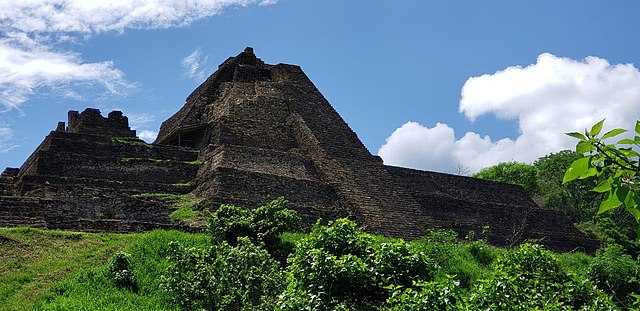
Deciphering Toniná’s Hieroglyphs
Key to unlocking Toniná’s past were the site’s hieroglyphs. Gradually, linguists and epigraphers made sense of the inscriptions that adorned the city’s walls. These texts told of rulers, battles, and alliances. They offered a glimpse into a civilization that was both spiritual and militaristic. With each glyph deciphered, the story of Toniná grew more vivid and fascinating.
Embracing Toniná’s Legacy
Today, Toniná is a site of great archaeological significance. Continued excavations contribute to our understanding of the Maya. They also help maintain the historic site. As discoveries unfold, Toniná cements its place as a pivotal piece of human history. Its legacy is now embraced by scholars and visitors alike. They seek to unearth the many mysteries that this ancient city holds.
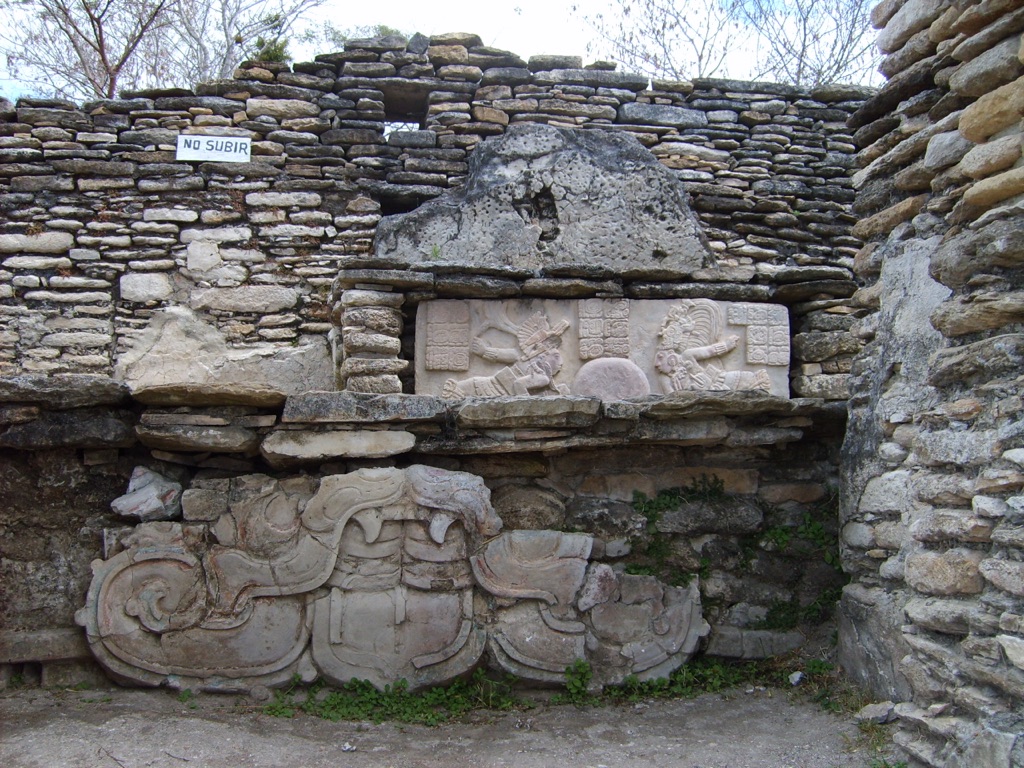
Cultural Significance, Dating methods, Theories and Interpretations
Unlocking Toniná’s Timeline
Dating the Toniná Archaeological Site proved to be an extensive process. Researchers used a combination of methods, including radiocarbon dating and stratigraphy. These techniques provided a window into the city’s active periods. The data suggests Toniná thrived between the 6th and 9th centuries. The construction layers of the site’s towering edifices further helped date its development. These methods combined offer a clearer picture of when Toniná’s culture was at its zenith.
Cultural Riches of a Maya Metropolis
Toniná stands as an invaluable cultural beacon in the study of Maya civilization. The city’s intricate carvings and architecture speak to a society rich in religious expression and art. One finds a strong connection between the deities worshiped and the ruler’s divine mandate. The many stelae and frescoes tell stories of gods, mortals, and the heavens. As such, Toniná not only holds its own cultural significance but also represents a broader Maya cultural heritage.
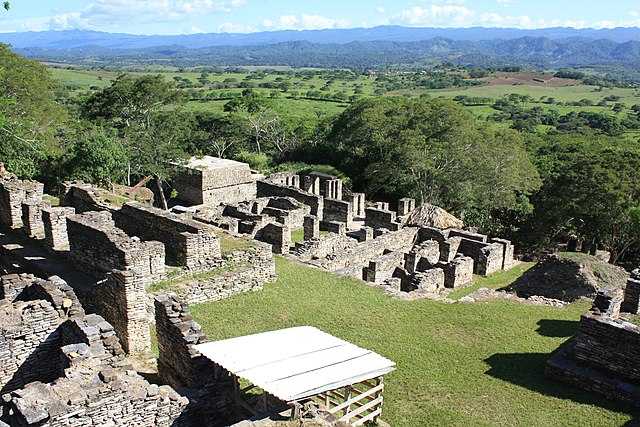
Theories Behind the Rise and Fall
Theories abound about the ascendancy and eventual decline of Toniná. Some scholars suggest the site’s extensive military might have played a role in its growth. Others hypothesize that its downfall might be tied to ecological factors, or shifts in trade and political power. These interpretations rely on evidence such as site excavations, artifact analysis, and comparisons with other Maya cities. Still, the full story of Toniná’s rise and fall remains partly shrouded in mystery.
Interpreting Socio-Political Structures
Understanding the social and political structures of Toniná offers intriguing challenges. Archaeologists interpret the site’s layout as a reflection of the society’s hierarchy. The grander structures presumably belonged to the elite, while the common folks occupied the lower terraces. These interpretations evolve with emerging findings. They help modern observers visualize the ancient city’s way of life.
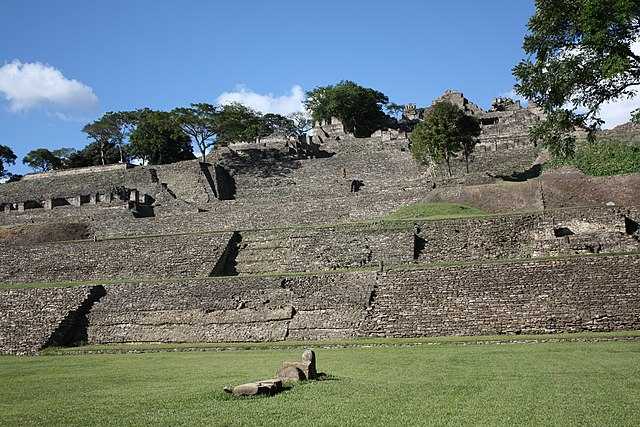
Spiritual Legacy Encoded in Stone
Toniná’s spiritual importance cannot be overstated. The site is rife with temples and altars, signifying a strong religious ethos. The city was possibly a significant spiritual center in the Maya world. Interpreters of the site often ponder the meanings behind its mystic ball courts and the sacredness of its many plazas. The spiritual legacy of Toniná continues to entice and enlighten those who study its time-worn stones.
Conclusion and Sources
In synthesizing the multifaceted history of the Toniná Archaeological Site, we reach a deeper appreciation for its cultural, political, and spiritual significance within the Maya civilization. As a center of astronomical advancement, military might, and religious worship, Toniná offers a compelling glimpse of an ancient world. The city’s intricate carvings, towering structures, and complex urban design form a lasting testament to the ingenuity and artistry of the Maya. Though much has been uncovered about Toniná, the site continues to be a subject of fascination and study, promising to yield further insights into the rich tapestry of Mesoamerican history.

For further reading and to validate the information presented in this article, the following sources are recommended:
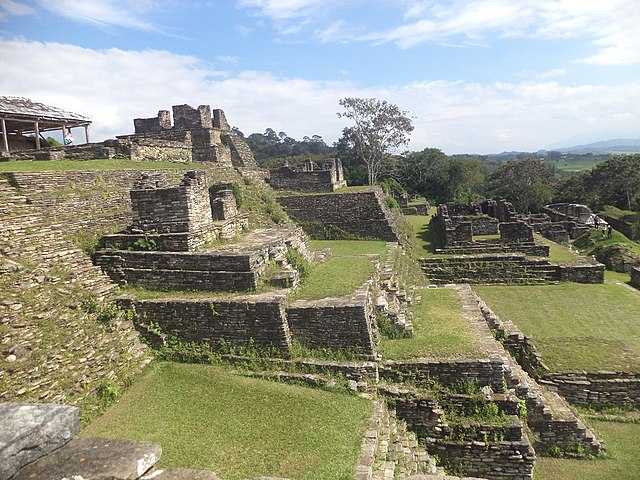
Or you can check any of these reputable archaeological and historical texts:
Arqueología Mexicana (2020) ‘Toniná, A Maya City that Flourished in Chiapas’
Instituto Nacional de Antropología e Historia (INAH) (2018) ‘Tonina’
Martin, S. and Grube, N. (2008) ‘Chronicle of the Maya Kings and Queens: Deciphering the Dynasties of the Ancient Maya’, Thames & Hudson, London.
Schele, L. and Freidel, D. (1992) ‘A Forest of Kings: The Untold Story of the Ancient Maya’, William Morrow and Co., New York, NY.
Shaw, L. (2012) ‘The Ancient Maya’, Greenwood, Santa Barbara, CA.

